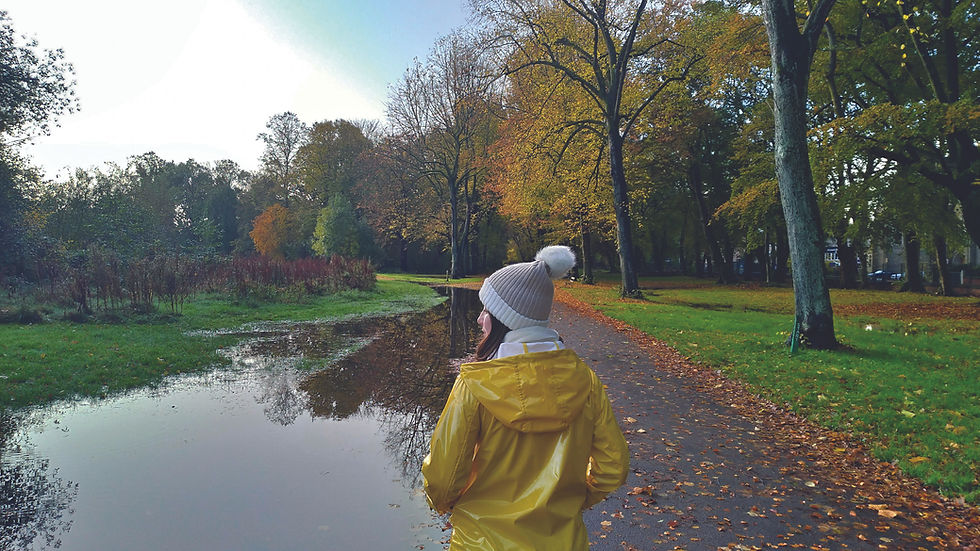The Greater Copenhagen light rail project
- The International
- Sep 7, 2022
- 3 min read

From Kongens Lyngby to Ishøj.
Photographs: The Greater Copenhagen Light Rail website
Text: Mariano Anthony Davies
Connecting Greater Copenhagen's North and West, this project commenced with land expropriation in 2018-2019 and is expected to be completed in 2025.
The decision to build a Greater Copenhagen Light Rail along the dual carriageway "Ring 3" came out of an agreement signed by all the Parties of the Danish Parliament in the summer of 2013. The company established for this purpose has a Board of Directors representing the 11 municipalities that are crossed by the Light Rail, the Capital Region and the Danish State (Ministry of Transport, Building and Housing).
The Greater Copenhagen Light Rail will make it easy, fast and comfortable to travel across Greater Copenhagen - running every five minutes during daytime hours, with no fixed timetable and connections to S-trains at six stations. It will stop close to DTU (Technical University of Denmark), Herlev and Glostrup Hospitals, and many other workplaces, shops, cultural, and sporting venues.
For most of its alignment, the light rail will run on its own track, separated from the rest of the traffic at the side or middle of the road. However, due to the lack of space, it will mingle with other traffic at a few locations. It is the biggest light rail project in Denmark as well as in all the five Nordic countries.
A light rail system makes little noise and is highly eco-friendly, running on electricity and with plenty of space for 200-230 passengers in each train, which corresponds to the number of passengers in about four city buses. The many advantages make it a popular mode of transport in Denmark, the Nordics and the rest of Europe.
"It is the biggest light rail project in Denmark as well as in all the five Nordic countries."

It will include a new 28-kilometre development area between Kongens Lyngby and Ishøj - increasing the areas' accessibility and thus creating a basis to attract private investment. In addition, many companies and individuals will be keen to be located close to sustainable and effective public transport systems.
Research suggests that until 2032 the Greater Copenhagen Light Rail and urban development in the area can create up to 36,500 new workplaces and attract approximately 32,000 new residents.
Denmark's first Light Rail opened in Aarhus in December 2017 with the first phase of the project covering 110 kilometres with 51 stops in the Aarhus area. At a cost of DKK 2.4 billion for this first phase. The 14.5-kilometre Odense Light Rail runs from Tarup Centre via the City Centre to Hjallese. Construction began in April 2018, with the line originally due to open at the end of 2020. It finally opened on 28 May 2022 and cost DKK 3.3 billion for this first phase.
The Greater Copenhagen Light Rail is expected to cost approximately DKK 6.2 billion (2017-prices), which includes a reserve of DKK 1 billion. The distribution of these construction costs is such that the Danish State will pay 40 per cent, the Capital Region 26 per cent and the 11 municipalities will together pay 34 per cent.
Once the Light Rail system is commissioned, the costs will be distributed so that the Capital Region will pay 43 per cent and the 11 municipalities between them will pay 57 per cent. The distribution key will be based on population numbers, the number of stations in each municipality and the potential urban growth.
Throughout the Nordic countries, tramway projects have already been decided upon and financed with local, regional and national funds. Other projects have been staked out in general plans or are even earlier in the planning process. The objects differ in scope; for example, Uppsala is planning for brand new tramways in Sweden, while Gothenburg has several projects in the loop, including smaller and larger ones.
Therefore, Nordic tramway ambitions vary greatly in scope between different cities and the realisation stages. For example, Lund has a system which is almost ready for service, while Uppsala will take a definite decision in the coming years.
Several cities are planning their public transport systems to create fast trunk bus lines in a way that will allow conversion to tramways in the future. This makes the bus services more attractive with more direct routes, increased visibility and long-term reservation for public transport. These trunk lines can be converted to trams in the future - should the need arise.









